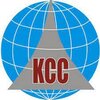


i
Crescent
Foundry
Work with us
![]()
Filter interviews by
Crescent Foundry Quality Inspector Interview Questions and Answers
6 Interview questions
To measure a part as per drawing, use appropriate measuring tools and follow the dimensions and tolerances specified in the drawing.
Identify the part to be measured and its features
Select the appropriate measuring tool (e.g. caliper, micrometer, gauge)
Follow the dimensions and tolerances specified in the drawing
Record the measurement accurately
Compare the measurement to the drawing specifications to ensure it meet...
Casting defects are imperfections that occur during the casting process.
Porosity
Shrinkage
Cracks
Inclusions
Misruns
Cold shuts
Warping
Shifts
Blowholes
Counter weight is a weight used to balance or offset another weight.
Counter weight is used to balance or offset another weight.
It is commonly used in machinery and equipment to prevent imbalance.
Examples include elevator counterweights, crane counterweights, and flywheel counterweights.
Counter weights can be made of various materials such as concrete, steel, or lead.
They are often designed to be easily adjustable ...
Section line is used to show the shape of an object in a section view, while centre line is used to indicate the center of a feature.
Section line is a thick, solid line that is drawn at a right angle to the cutting plane line.
Centre line is a thin, long, dashed line that is used to indicate the center of a feature.
Section line is used to show the shape of an object in a section view, while centre line is used to i...
1st angle and 3rd angle projection are two methods of representing a 3D object on a 2D surface.
In 1st angle projection, the object is placed in front of the viewing plane and the views are taken from behind the object.
In 3rd angle projection, the object is placed behind the viewing plane and the views are taken from in front of the object.
1st angle projection is commonly used in Europe and Asia, while 3rd angle pr...
To draw front, top and side view of a drawing, follow these steps.
Start by drawing the front view, which shows the object as it appears from the front.
Next, draw the top view, which shows the object as it appears from above.
Finally, draw the side view, which shows the object as it appears from the side.
Make sure to label each view with the appropriate dimensions and angles.
Use a ruler and protractor to ensure accu...
Crescent Foundry Quality Inspector Interview Experiences
1 interview found
Interview Questionnaire
9 Questions
- Q1. Measure a part as per drawing.
- Ans.
To measure a part as per drawing, use appropriate measuring tools and follow the dimensions and tolerances specified in the drawing.
Identify the part to be measured and its features
Select the appropriate measuring tool (e.g. caliper, micrometer, gauge)
Follow the dimensions and tolerances specified in the drawing
Record the measurement accurately
Compare the measurement to the drawing specifications to ensure it meets req...
- Q2. Tell me about yourself?
- Q3. How you come to know about our company?
- Q4. Why you want to left your previous company?
- Q5. What is the difference between 1st angle and 3rd angle projection?
- Ans.
1st angle and 3rd angle projection are two methods of representing a 3D object on a 2D surface.
In 1st angle projection, the object is placed in front of the viewing plane and the views are taken from behind the object.
In 3rd angle projection, the object is placed behind the viewing plane and the views are taken from in front of the object.
1st angle projection is commonly used in Europe and Asia, while 3rd angle project...
- Q6. Draw front view top view and side view of a drawing?
- Ans.
To draw front, top and side view of a drawing, follow these steps.
Start by drawing the front view, which shows the object as it appears from the front.
Next, draw the top view, which shows the object as it appears from above.
Finally, draw the side view, which shows the object as it appears from the side.
Make sure to label each view with the appropriate dimensions and angles.
Use a ruler and protractor to ensure accuracy.
- Q7. Difference between section line and centre line?
- Ans.
Section line is used to show the shape of an object in a section view, while centre line is used to indicate the center of a feature.
Section line is a thick, solid line that is drawn at a right angle to the cutting plane line.
Centre line is a thin, long, dashed line that is used to indicate the center of a feature.
Section line is used to show the shape of an object in a section view, while centre line is used to indica...
- Q8. What you know about counter weight?
- Ans.
Counter weight is a weight used to balance or offset another weight.
Counter weight is used to balance or offset another weight.
It is commonly used in machinery and equipment to prevent imbalance.
Examples include elevator counterweights, crane counterweights, and flywheel counterweights.
Counter weights can be made of various materials such as concrete, steel, or lead.
They are often designed to be easily adjustable or re...
- Q9. What are the casting defects?
- Ans.
Casting defects are imperfections that occur during the casting process.
Porosity
Shrinkage
Cracks
Inclusions
Misruns
Cold shuts
Warping
Shifts
Blowholes
Interview Preparation Tips
Don't be oversmart.
Be cool and friendly.
Top trending discussions






Interview questions from similar companies
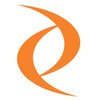
Deputy Manager Interview Questions & Answers
Calderys India Refractoriesposted on 24 Jun 2024
I applied via Approached by Company and was interviewed before Jun 2023. There were 2 interview rounds.
(2 Questions)
- Q1. Unshaped refractories and types of industry culture
- Ans.
Unshaped refractories are versatile materials used in various industries, each with its own unique culture.
Unshaped refractories are materials that can be molded and shaped to fit specific applications without the need for pre-fabrication.
They are commonly used in industries such as steelmaking, cement production, and petrochemical refining.
Each industry has its own unique culture and practices when it comes to the use...
- Q2. Steel making process
- Ans.
Steel making process involves converting iron ore into steel through various processes like smelting, refining, and casting.
Iron ore is first mined and then processed to remove impurities.
The purified iron ore is then melted in a blast furnace with coke and limestone to produce molten iron.
The molten iron is then converted into steel through processes like basic oxygen steelmaking or electric arc furnace.
The steel is t...
(2 Questions)
- Q1. Location, Previous industry background
- Q2. Previous CTC , 5 and half day leave and why you change your current job


(2 Questions)
- Q1. What challenges u had face
- Ans.
I have faced various challenges in my career, including adapting to new technologies and managing difficult team members.
Adapting to new technologies and software
Managing difficult team members and conflicts
Meeting tight deadlines and handling high-pressure situations
Learning new skills and taking on new responsibilities
Dealing with unexpected setbacks and obstacles
- Q2. How you handel situation
- Ans.
I handle situations by staying calm, assessing the problem, and finding a solution.
I remain calm and composed in high-pressure situations
I analyze the situation to understand the root cause of the problem
I prioritize tasks and delegate responsibilities to team members
I communicate effectively with all stakeholders to ensure a smooth resolution
For example, when a customer was dissatisfied with our service, I listened to...
Interview Preparation Tips

Junior Engineer Interview Questions & Answers
Calderys India Refractoriesposted on 24 Jul 2021
Interview Questionnaire
1 Question
- Q1. Questions related to refractory , steel & ceramics

I applied via Company Website
(1 Question)
- Q1. Basic diploma level question
Interview Preparation Tips

I applied via Approached by Company and was interviewed before Oct 2023. There were 2 interview rounds.
(2 Questions)
- Q1. Domain specific questions and it's easy
- Q2. General question to understand you as a person
(1 Question)
- Q1. Basic questions and discussion on salary
Interview Preparation Tips

I applied via Naukri.com and was interviewed before Aug 2023. There was 1 interview round.
(2 Questions)
- Q1. What is your current ctc
- Ans.
My current CTC is confidential and I would prefer to discuss compensation during the negotiation phase.
My current CTC is subject to confidentiality agreements.
I am open to discussing compensation during the negotiation phase.
I believe my skills and experience align with the Senior Engineer role.
- Q2. Reason for job change
- Ans.
Seeking new challenges and opportunities for growth
Desire to work on more complex projects
Looking for a company with better career advancement opportunities
Seeking a more collaborative team environment
Want to expand skill set in new technologies
Interview Preparation Tips

I applied via Walk-in and was interviewed before Mar 2023. There was 1 interview round.
(1 Question)
- Q1. Subjects Oriented Questions


(1 Question)
- Q1. Types of welding, measuring equipment
- Ans.
There are various types of welding techniques and measuring equipment used in QA engineering.
Types of welding include MIG, TIG, Stick, and Flux-Cored welding.
Measuring equipment used in QA engineering includes calipers, micrometers, gauges, and coordinate measuring machines.
Welding and measuring equipment must be calibrated regularly to ensure accuracy.
Proper training and certification is necessary for QA engineers to ...
(1 Question)
- Q1. Questions about personal life
Interview Preparation Tips

I appeared for an interview in Feb 2025.
(1 Question)
- Q1. Profile verification
(2 Questions)
- Q1. Technical questions
- Q2. What about your previous experience
(1 Question)
- Q1. Salary discussion
Interview Preparation Tips
Crescent Foundry Interview FAQs
Tell us how to improve this page.
Crescent Foundry Interviews By Designations
- Crescent Foundry Senior Engineer Interview Questions
- Crescent Foundry Melting Engineer Interview Questions
- Crescent Foundry Accounts Manager Interview Questions
- Crescent Foundry Project Manager Interview Questions
- Crescent Foundry Production Manager Interview Questions
- Crescent Foundry Quality Engineer Interview Questions
- Crescent Foundry Team Manager Interview Questions
- Crescent Foundry HR Manager Interview Questions
- Show more
Interview Questions for Popular Designations
Interview Questions from Similar Companies
Crescent Foundry Quality Inspector Reviews and Ratings
based on 4 reviews
Rating in categories
|
Quality Inspector
22
salaries
| ₹2 L/yr - ₹3.1 L/yr |
|
Executive Accountant
20
salaries
| ₹1.9 L/yr - ₹4.2 L/yr |
|
Assistant Manager
19
salaries
| ₹5.3 L/yr - ₹8.2 L/yr |
|
Quality Engineer
17
salaries
| ₹1.9 L/yr - ₹5 L/yr |
|
Supervisor
16
salaries
| ₹1.7 L/yr - ₹3.8 L/yr |

INDO-MIM
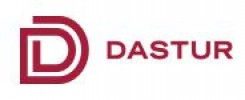
MN Dastur & Company
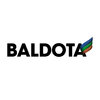
MSPL
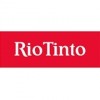
Rio Tinto
- Home >
- Interviews >
- Crescent Foundry Interview Questions

